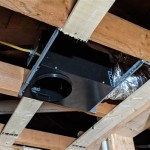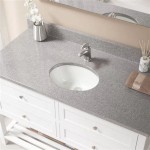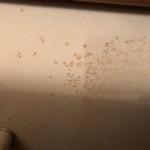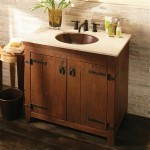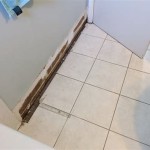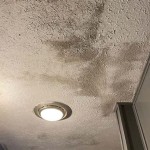What Causes Mold on Bathroom Walls?
Mold growth on bathroom walls is a common problem in many households. This unsightly and potentially harmful fungus thrives in damp, warm environments, making bathrooms a prime location for its development. Understanding the underlying causes of mold growth is crucial for effective prevention and remediation.
Key Factors Contributing to Bathroom Mold Growth
Several factors contribute to the ideal conditions for mold growth in bathrooms. These include:
- High Humidity: Bathrooms experience significant moisture fluctuations, particularly during and after showers or baths. This elevated humidity creates a perfect breeding ground for mold spores.
- Condensation: Warm, moist air coming into contact with cooler surfaces, such as walls, mirrors, and windows, leads to condensation. This accumulated moisture provides a readily available water source for mold.
- Poor Ventilation: Inadequate ventilation prevents the effective removal of moist air, trapping it within the bathroom. This stagnant, humid environment encourages mold proliferation.
- Leaks: Leaky pipes, faucets, or showerheads provide a consistent source of moisture for mold to thrive. Even small, undetected leaks can contribute significantly to mold growth over time.
- Organic Materials: Mold requires organic matter to feed on. Common materials in bathrooms, such as drywall, wallpaper, grout, and caulk, can provide sustenance for mold colonies.
- Lack of Regular Cleaning: Infrequent cleaning allows soap scum, dirt, and other organic debris to accumulate, providing additional food sources for mold.
- Temperature: Warm temperatures further accelerate mold growth, particularly in conjunction with high humidity.
The Role of Humidity and Condensation
Humidity plays a significant role in mold development. Warm air holds more moisture than cold air. When warm, moisture-laden air encounters cooler surfaces, the water vapor condenses into liquid water. This condensation creates the dampness that mold requires to grow. Bathrooms, with their frequent temperature fluctuations and high moisture levels, are particularly susceptible to condensation-related mold growth.
The Importance of Ventilation
Proper ventilation is essential for preventing mold growth in bathrooms. Effective ventilation systems, such as exhaust fans, help remove moist air from the bathroom, reducing humidity levels and minimizing condensation. Opening windows after showering or bathing can also improve ventilation and help dry out the bathroom. Ensuring adequate airflow can significantly inhibit mold development.
Identifying and Addressing Leaks
Undetected and unrepaired leaks can be a major contributor to mold growth. Leaks, even minor ones, provide a constant source of moisture that sustains mold colonies. Regularly inspecting pipes, faucets, showerheads, and toilets for leaks is essential. Promptly repairing any leaks can prevent extensive mold growth and related damage.
Choosing Mold-Resistant Materials
Selecting mold-resistant materials for bathroom construction and renovation can reduce the risk of mold growth. Mold-resistant drywall, paint, and grout are available and can help inhibit mold development. These materials are designed to prevent mold from taking hold and spreading, even in humid environments.
The Impact of Cleaning Practices
Regular cleaning plays a crucial role in preventing mold growth. Cleaning removes soap scum, dirt, and other organic residues that can serve as food sources for mold. Using appropriate cleaning products and techniques can help keep bathroom surfaces clean and dry, minimizing the likelihood of mold development.
Controlling Temperature and Humidity
Maintaining a consistent and moderate temperature in the bathroom can help control humidity levels and minimize the risk of mold growth. Using a dehumidifier can help reduce excess moisture in the air, particularly in bathrooms without adequate ventilation. Keeping the bathroom door open when not in use can also improve airflow and reduce humidity.
Understanding Mold Spores
Mold reproduces through microscopic spores that are ubiquitous in the environment. These spores are carried by air currents and can settle on any surface. In the presence of moisture and organic matter, these spores can germinate and develop into visible mold colonies. While it is impossible to eliminate all mold spores, controlling the factors that promote their growth is crucial for preventing mold problems.
Long-Term Mold Prevention
Preventing mold growth requires a comprehensive approach that addresses all contributing factors. This includes maintaining proper ventilation, promptly addressing leaks, using mold-resistant materials, practicing regular cleaning, and controlling temperature and humidity. By implementing these preventative measures, homeowners can significantly reduce the risk of mold growth in their bathrooms and maintain a healthy indoor environment.

How To Get Rid Of Mold In Bathroom 2024 Tips From Puroclean

Bathroom Mold How To Identify And Get Rid Of In Environix

Bathroom Mold How To Identify And Get Rid Of In Environix

Bathroom Mold How To Identify And Get Rid Of In Environix

Ways To Prevent Mold In Bathrooms Forbes Home

What To Know About Bathroom Mold And When You Should Worry

What To Know About Bathroom Mold And When You Should Worry

Mould On Walls Stop It And Remove

What Causes Mold In Your Home Finding Removal Prevention

Bathroom Mold How To Identify And Get Rid Of In Environix
Related Posts
